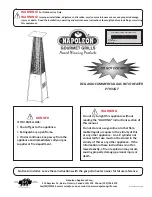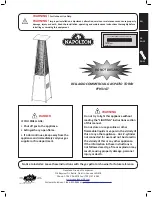
Instruction manual SGS
13
gis
2
Working principle of
the appliance
2.1
Introduction
Topics covered in this chapter:
•
General working principle of the appliance
;
•
The appliance's heating cycle
;
•
Protection for the appliance
;
•
Safety of the installation
;
•
Protection for the solar heating system
.
2.2
General working
principle of the
appliance
The figure shows a cut-away view of the appliance.
In this appliance, the cold water enters the bottom of the tank through the cold
water inlet (14).
Once the appliance and the storage reservoir are completely filled with water,
they are both constantly under mains water pressure. When hot water is drawn
from the appliance, it is immediately replenished with hot water from the storage
tank, which in turn is replenished with cold water. The water in the storage tank
is heated by a heat exchanger which is connected to the solar heating system.
The appliance is equipped with a gas/air premix burner (17). The air is drawn in
through the fan (18). The gas is supplied via the gas control (16) on the intake
side of the fan. The gas/air mixture is then blown into the burner. The modulated
supply of gas and air ensures that the optimum gas/air mixture is always
achieved.
A gas-fired heat exchanger (11) in the appliance heats the tap water further if
necessary. The air required by the latter for combustion is forced into the burner
(17) by the fan (18).
The heated tap water leaves the tank through the hot water outlet (2). Once the
appliance is completely filled with water, it will constantly be under mains water
pressure. When hot water is drawn from the appliance, it is immediately
replenished with cold water.
The gas is fed to the burner via the gas control (16). The modulated supply of
gas and air ensures that the optimum gas/air mixture is always achieved. The
special construction of the burner causes the mixture to form a vortex (cyclone
effect) before it becomes ignited. This vorticity improves the ignition on the hot
surface igniter (20), as well as ensuring optimum combustion efficiency. The
special design of the heat exchanger (11) ensures that the flue gases are first
led downwards via the combustion chamber, then upwards via the heat
exchanger, and downwards again alongside the water in the tank. The flue
gases gradually become cooler in the process. Because the cooled flue gases
flow alongside the cold water lower down in the tank, they start to condense.
This condensation causes latent heat energy to be transferred to the cooler
water, thereby increasing the performance of the unit. The condensate yielded
by this process is discharged via the siphon (23).
Heat losses are prevented by the insulating layer (24) in both the storage tank
and the appliance itself. Both are enamel-coated on the inside to protect against
corrosion. The anodes (9) provide extra protection against corrosion. Both are
fitted with an inspection and cleaning opening (12) for maintenance purposes.
Summary of Contents for SGS - 100
Page 1: ...80 100 Installation User and Service Manual Installation User and Service Manual...
Page 2: ...www aosmithinternational com your installer...
Page 4: ...4 Instruction manual SGS gis...
Page 8: ...Table of contents 8 Instruction manual SGS...
Page 12: ...Introduction 12 Instruction manual SGS 1 gis...
Page 44: ...Installation 44 Instruction manual SGS 3 is...
Page 62: ...Shutting down 62 Instruction manual SGS 10 gis...
Page 92: ...Maintenance frequency 92 Instruction manual SGS 14 is...
Page 101: ...Instruction manual SGS 101 is...
Page 106: ...Appendices 106 Instruction manual SGS 17 is...














































